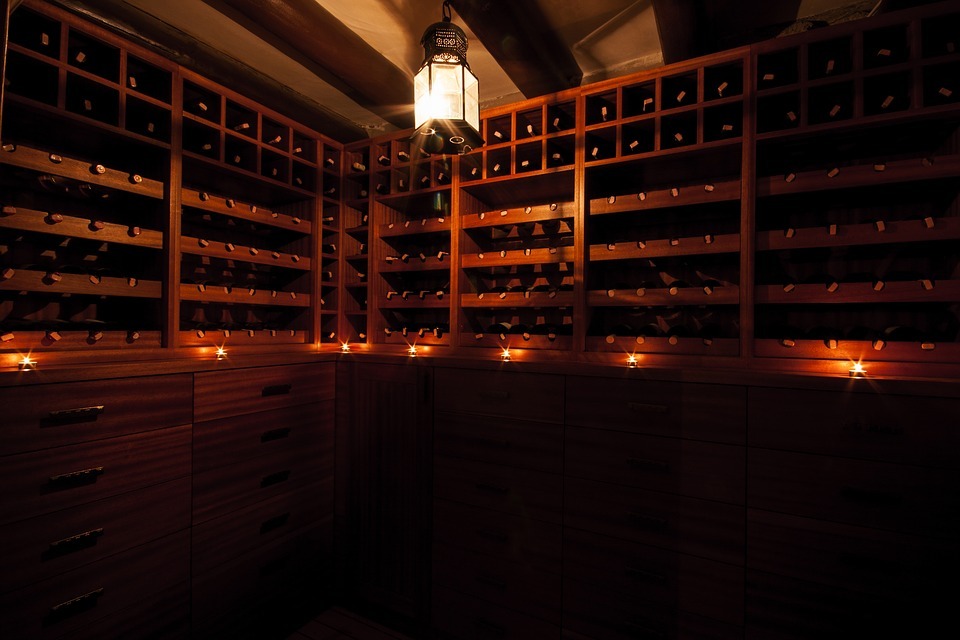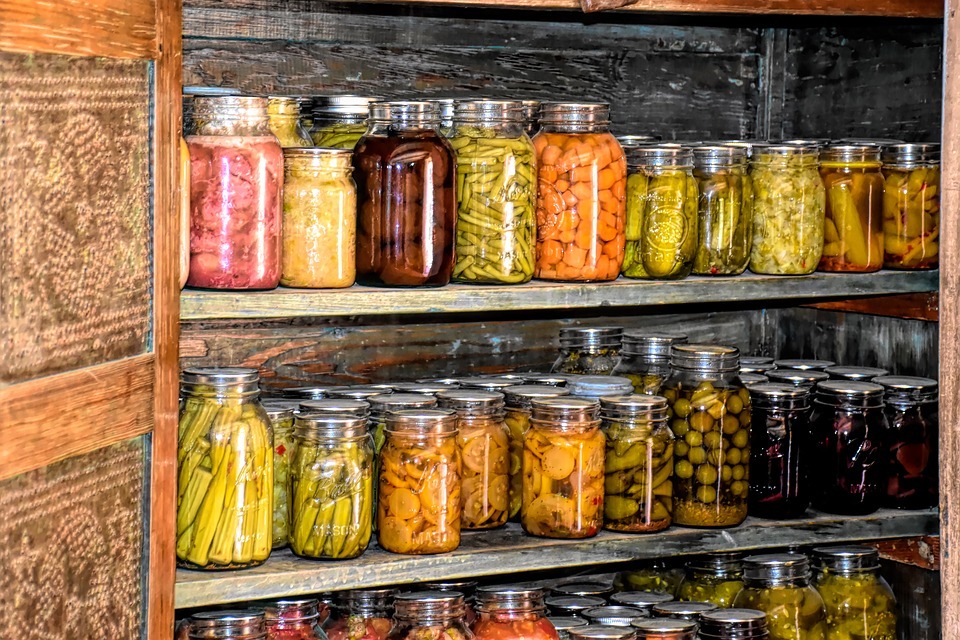Whether you are storing produce or wine, the cellar is a very beneficial room found in many homes. However, some of those who are living off-grid may not have one, so if you are looking to build a root or food cellar, we are here to help you know more about this useful room. Here is the ultimate guide to cellars.
Cellar vs. Basement
Before we dive into the intricacies on the cellar, let us discuss first the difference between a cellar and a basement, as most people would often describe them to have the same function. A basement is a room found underneath the house and usually doesn’t have any specific functions. Because it doesn’t have a set function, basements can be utilized for a variety of purposes, like making it a game room, another bedroom, or even a storage room for scraps or objects that would eventually be sold at a garage sale. On the other hand, cellars are built not only to store things but also to protect and secure them.
Basements would typically not have many features on it like temperature control or storage compartments, while cellars are a little bit more utilitarian since it would also need pieces of furniture in order for it to secure items efficiently.
Types of Cellars Based on Function
As previously mentioned, cellars are utilized to store objects, but what are those objects exactly? Depending on what you store in the cellar, its type and its function will change drastically. Here are the types of cellars based on function.
Root Cellar
Root cellars are used to store farm goods like fruits, vegetables, nuts, etc. This type of cellar was traditionally utilized to secure root crops like carrots and radishes, hence the reason why it has “root” in its name.
In modern times, root cellars are now built to store other food items, and they particularly effective in controlling the temperature needed for natural foods like vegetables and fruits. During winter, people who own root cellars would store their food supply there so that it won’t get damaged due to harsh weather conditions.
Storm Cellar
The storm cellar is a variation of an underground bunker that is used not to store and secure objects but people. As its name suggests, the storm cellar is normally built to protect people against storms, although they are most likely more effective against tornadoes, which would usually appear after or before a storm. Most storm cellar that you will find today is located in Tornado Alley, a colloquial term for the group of states that are affected by tornadoes frequently.
There are two subtypes for storm cellars. The first one is called the above-ground cellar, which looks like a small house but is built using sturdier construction materials. The second one is the below-ground cellar, a type that looks like a normal basement.
Semi-Basement
A semi-basement can be considered as both a cellar and a basement, and is often built to have its bottom half below-ground and its upper half above-ground. Semi-basements are typically used as kitchens, where the smoke or the smell of food won’t go into the other parts of the house but out of the windows built on its top portion.
Large houses or mansions are generally the ones that have semi-basements, and you would even see the windows of these rooms to appear in front or at the back of the building. Because the windows on a semi-basement are too high for people to look through, its only purpose is to let air inside if it is too hot.
Wine Cellar
Considered to be the most popular type, the wine cellar is built to store, preserve, and age wine. It is a known fact that some luxurious wines can taste better with age, and wine enthusiasts would rather age their bottles of wine at home so that they can enjoy and learn more about the process of aging wine. Wine cellars would usually have a controlled temperature so that the wine won’t taste bad if it is too hot, or it won’t lose its flavor if it is too cold.
Most wine cellars are built below-ground to have better control of the temperature, but homeowners with no basements would instead have wine rooms, which are above ground and connected to the house. Wine cellars have been around for more than 3,700 years, but before they were invented, people would store wines in catacombs, where the temperature is not controlled properly, and dust or dirt would often get in the wine. It is believed that the creation of the first cellar also coincided with the invention of cork stoppers.
Types of Cellars Based on Temperature Control
By reading about the types of cellars, you would see that temperature is an important aspect of building a great cellar. Currently, there are two types of cellars that control temperature differently.
Passive Cellar
Passive cellars allow natural temperatures to get inside the room, although in a much lower degree. This type of cellar is built below-ground so that it can normalize the temperature if it is too hot or cold. Since there is no technology involved in controlling the temperature in passive cellars, it is more energy-efficient, and it will still keep its functions even if the power is cut off in the house.
Active Cellar
Active cellars are probably more popular than passive ones, mainly because homeowners will have an easier time controlling the temperature inside the room, thanks to the cooling or heating devices installed in the area. An active cellar is highly insulated, which means that there shouldn’t be any gaps, holes, on windows on it to keep the conditions normalized inside.
Unfortunately, because you need machines for temperature control in an active cellar, maintenance can sometimes be difficult to perform, especially if you are also looking for imperfections or damages on the walls, the floor, or the ceiling. In addition, because of its high usage of power, the active cellar may not be supported for those who are living off-grid.
What is the Right Temperature for Cellars?
Food items like fruits, vegetables, and even wine would need to be stored in a room with the right temperature for them not to spoil. The right temperature would be determined based on the weather conditions outside your home, as well as the humidity level in the area.
For wine, and for most foods, the suitable temperature is approximately 55 degrees Fahrenheit, which is a little bit below normal temperature during a sunny day. If the temperature gets too cold, the wine will take longer to age, but if it is too hot inside the cellar, the wine would have a shorter shelf life.
What you need in a cellar is the right balance between warm and cold, hence the reason why most homeowners would rather have active cellars to have better control of the balance in temperature. If you are living in a relatively cool area, then aging wine in a passive cellar may not be much of a problem for you, although you would always have to keep an eye on the temperature inside.
Does Humidity Matter?
Humidity is also another important factor to look into when building a cellar, as it can have even worse effects on the foods that you store in the cellar compared to temperature. According to experts, the cellar should have a relative humidity (RH) of 50% to 70%, depending on the items that you are storing.
Wine bottles would most of the time have 100% relative humidity inside, so it doesn’t really matter if the humidity levels in the cellar are high. However, the labels that are stuck on the bottles would get damaged due to high humidity, and labels for wine enthusiasts are as important for them as the contents of the bottle. To keep the bottles in perfect shape in condition, the relative humidity in the cellar should be at 60%.
Should Sunlight Get Inside the Cellar?
Sunlight often has more benefits than drawbacks, but for cellars, it can be a problem. The light coming from the sun often yellows and spoils items if they get too exposed to it, and the items that are most affected are particularly those that are natural like fruits and vegetables. Sunlight also has negative effects on wine, as it can often change the flavor of the drink, and this is the reason why wine bottles are tinted in a darker color so that sunlight won’t get through it 100%.
For better storage, it is best that cellars don’t have windows in order for sunlight to not reach it. By omitting windows, you will not only be able to block sunlight, but you will also prevent unnecessary heat coming from the rays of the sun, which can damage the food items that you are storing in the cellar.
Now that you have learned more about cellars, you will surely be more confident in building one for your home. However, make sure that you have contacted a construction company so that they can help you build the cellar of your dreams.

